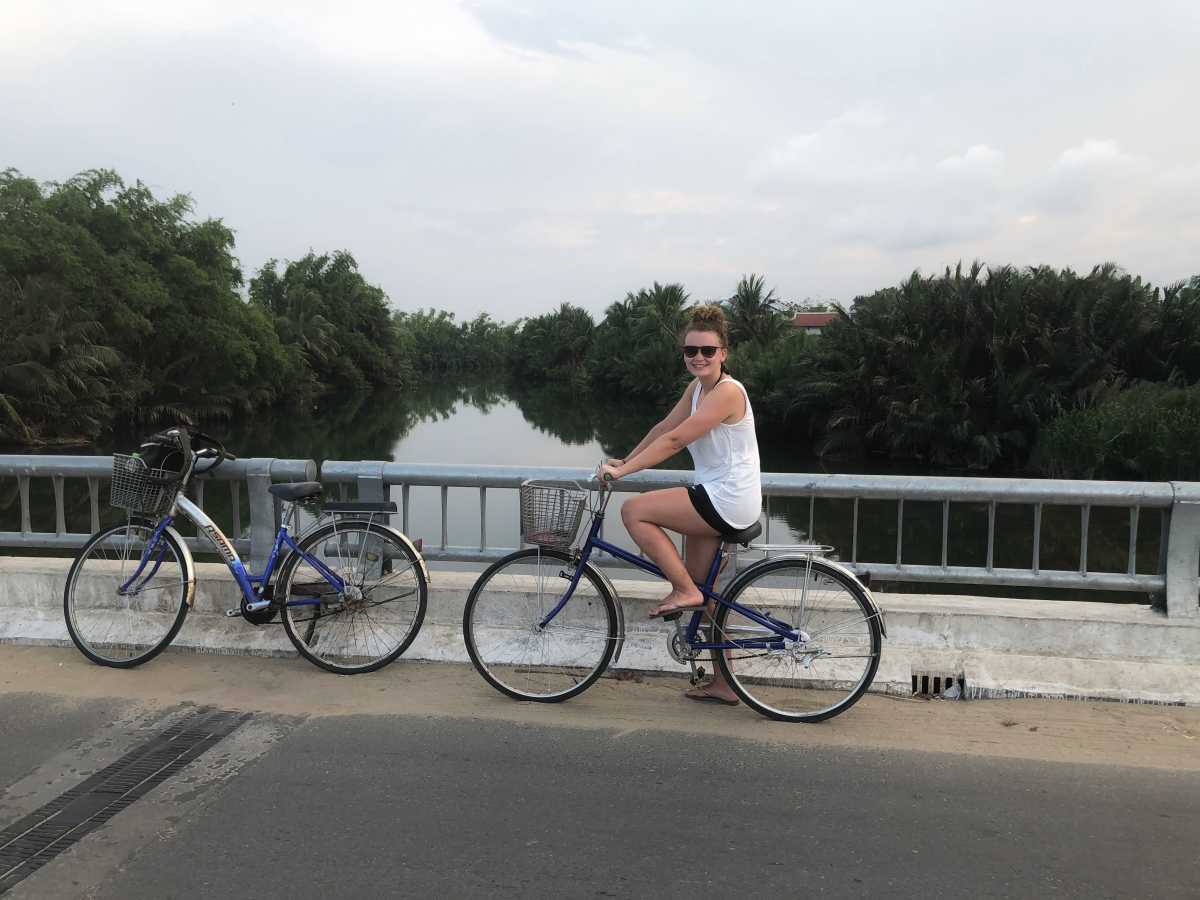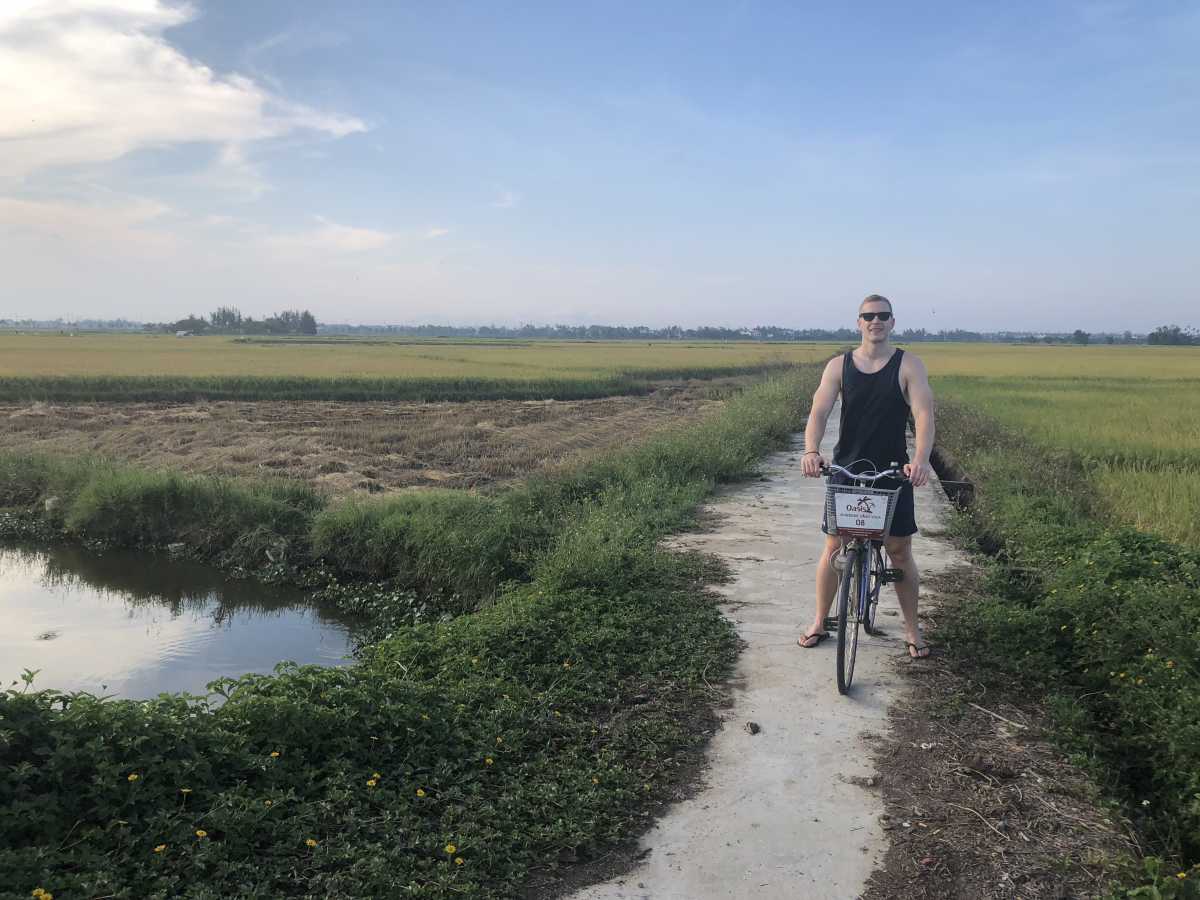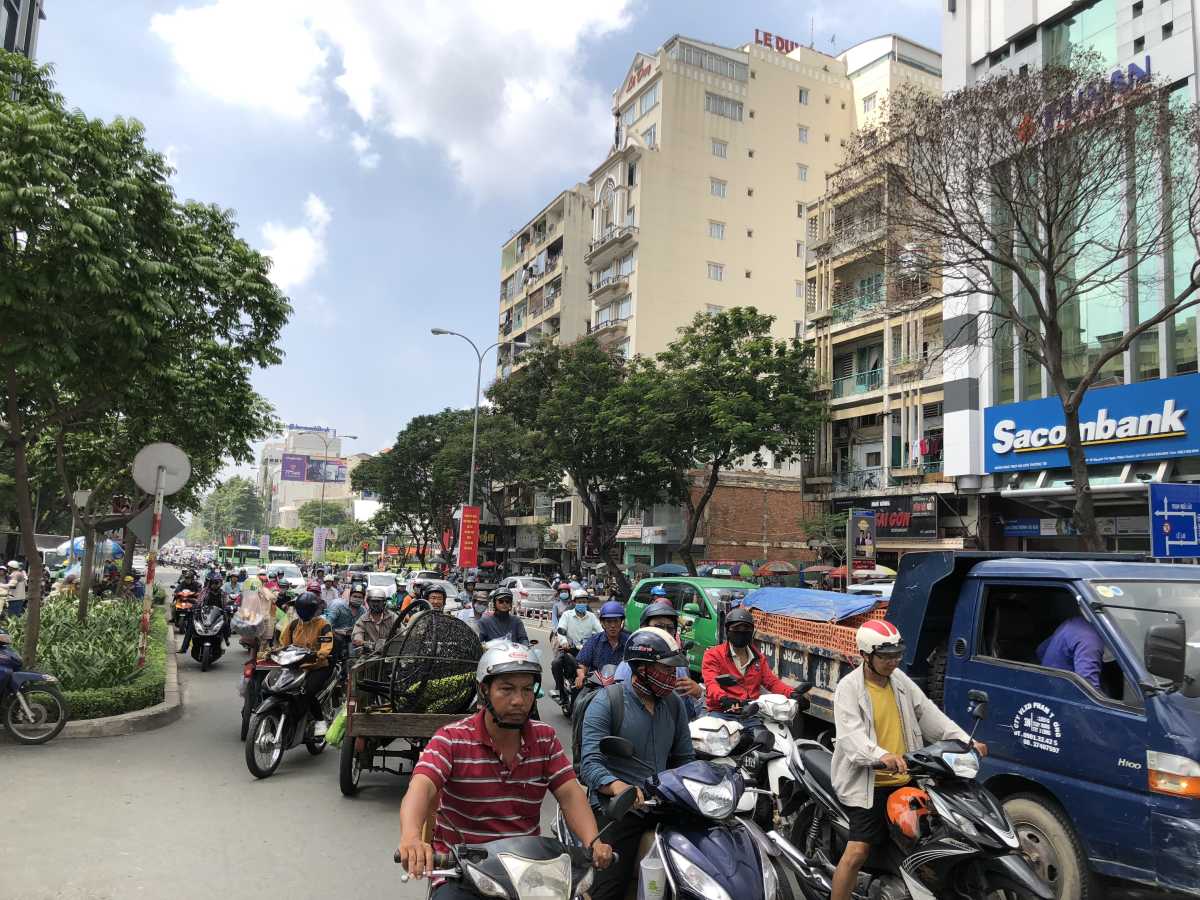Disclaimer: This is what has worked for us. We take no responsibility for your safety! (But we’re sure you’ll be fine).
How to cross the road
If you wait for a break in the constant flow of traffic, you’ll be waiting forever. Drivers and scooter riders in Vietnam are used to weaving around pedestrians. If possible, wait until the traffic becomes a bit lighter or there’s a natural break in the volume of cars and scooters, then step off the pavement and cross the road confidently, slowly and in a straight line. Try not to hesitate. If you use a pedestrian crossing, don’t expect people to stop for you. They won’t.
You’ll usually hear some beeping. Don’t worry, it’s completely normal. At first, you might find it easier to wait for a local to cross the road. Shuffle along with them and you won’t go far wrong.
Renting a bike/scooter
In Hoi An, cycling is by far the best way to get around. While we definitely wouldn’t recommend hiring a scooter or bike in one of the busiest cities (like Hanoi or HCMC), it is worth considering hiring a bike in the smaller towns.
You’ll often find that hotels offer them for free, but be careful because they might ask you to sign a disclaimer. Always check that the bike has no visible damage. If it does, take pictures or ask for a different bike. We came across a couple of buckled wheels, soft tyres and sticky kick-stands.
Make sure that you’re provided with a bike lock too. Most hotels won’t think twice about charging you if you return the bike damaged, or if it gets stolen. One thing we noticed in Hoi An was how similar all of the bikes looked. (In fact, we received an email the day after we’d visited Hub Hoi An to ask if we’d accidentally ridden off on someone else’s bike! We hadn’t). It’s a good idea to take a picture of yours, or to memorise the number on the basket if there is one.

It’s also worth checking the brakes and the bell. The first bikes we rented in Hoi An didn’t have bells. Trust me, you NEED a bell to attract attention in Vietnam!
If you can, avoid riding at night. At a minimum, stick to well-lit roads. None of the bikes we came across had lights, and many didn’t even have reflectors. (A lot of scooters over here have no lights either).
Be defensive
ALWAYS be ready to stop. Junctions are a free-for-all (even at junctions with traffic lights, scooter drivers and sometimes even cars regularly zoom through on red).
Even more so than at home, you need to concentrate on what other people are doing. If you think somebody is going to pull out on you, chances are they will! Often, you’ll find that scooter riders don’t even look before pulling out of side roads and alleyways. Try to strike a balance between careful and confident (yep, it’s tricky).

Vietnam road rules
It might surprise you to know that a lot of the road rules are similar to those you’re used to at home. These include:
- Mobile phones aren’t allowed (but you’ll regularly see people jabbering away at the wheel)
- Beeping isn’t allowed between 10pm-5am (but you’ll still hear it all night long)
- Weaving isn’t allowed (but it happens)
- Riding side-by-side isn’t allowed (but you’ll see it all the time)
Can you see a theme developing? Make yourself aware of the road rules, even if the Vietnamese don’t always obey them!

Drink driving
Drinking and driving is a huge problem in Vietnam. The lower limit is 0.25mg/l of air, or 50mg/100ml of blood, and the fines are steep if you get caught.
When abroad, it’s easy to make risky decisions that you’d never make at home. You wouldn’t normally drink and drive, so don’t do it here. Even if it’s only a short bike or scooter ride back from a bar, who knows what could happen? If you’re heading out for drinks, walk or take one of the many cheap taxis available.
How to use the roads in Vietnam
Confidence is key! Once you’ve spent a few days in Hanoi or Ho Chi Minh City, you’ll soon get used to shuffling across the road between bikes, scooters and taxis. Once you’ve been on a bike ride, you’ll feel much more confident the next time.
During our three weeks in Vietnam, we only saw one accident in HCMC, where somebody came off their scooter at a set of traffic lights. They picked themselves (and their scooter) up and carried on!
You’ll almost certainly see some questionable driving and riding, but as long as you stay aware, chances are you’ll be just fine.
Have your say